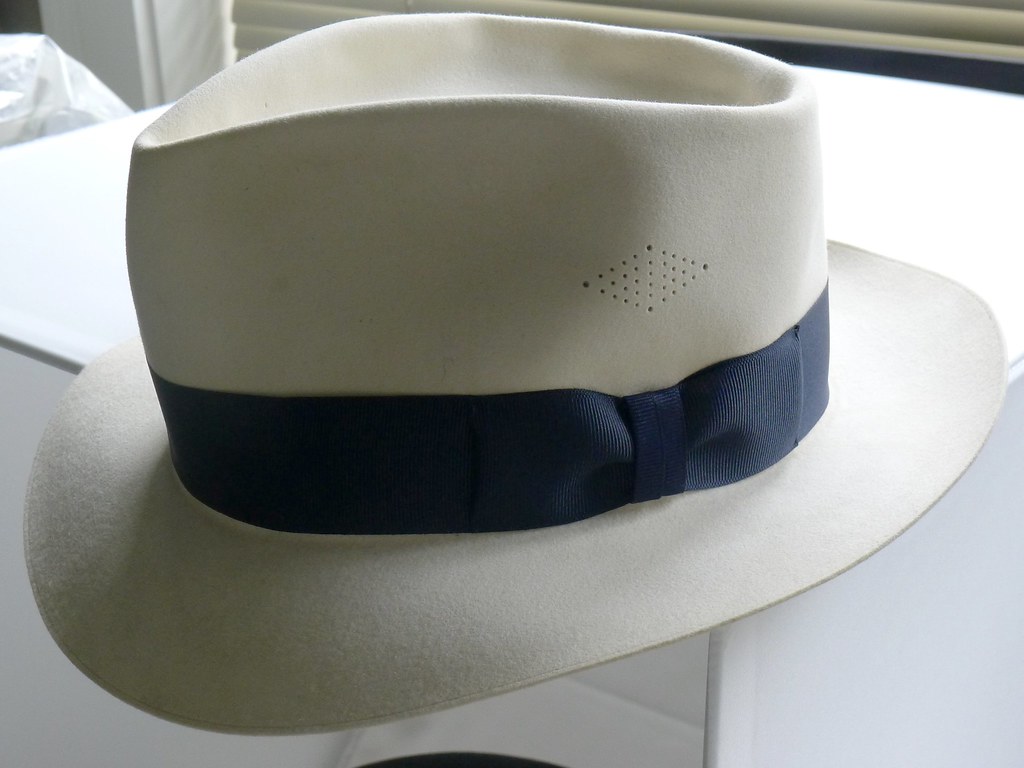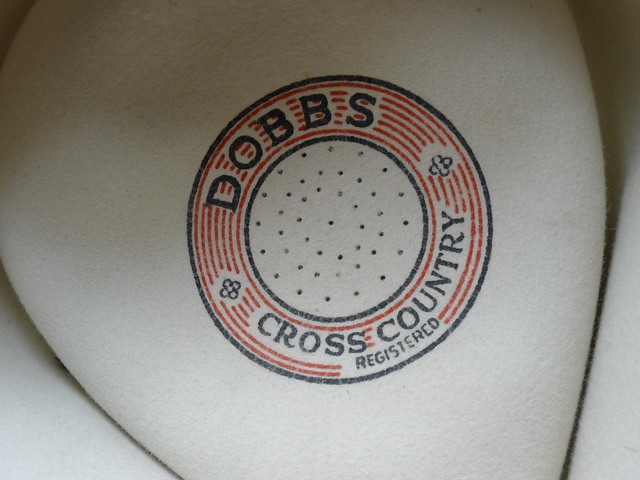Good thing I added them on both sides of my VSYes, and here's why: on the vintage hats that I've seen in person, the side vents were always on both sides.
Last edited:
Good thing I added them on both sides of my VSYes, and here's why: on the vintage hats that I've seen in person, the side vents were always on both sides.
I really like the vents that Art put in my VS Natural ArtLite.
With the liner out, it makes it almost a year-round wearer, only the really rough August of GA make it not....
It takes very little ventilation to relieve the build-up of condensation, the main benefit of this type of treatment. There is some cooling effect although obviously limited. Light rain is not going to be an issue, and heavy rain will eventually soak through any natural fiber hat that is not specially coated. Rain certainly is not likely to run through your side ventilation. You'll probably have to get your horse to drink more quickly from your vented Stetson however.
 John Lofgren Monkey Boots Shinki Horsebuttt - $1,136 The classic monkey boot silhouette in an incredibly rich Shinki russet horse leather.
John Lofgren Monkey Boots Shinki Horsebuttt - $1,136 The classic monkey boot silhouette in an incredibly rich Shinki russet horse leather.  Grant Stone Diesel Boot Dark Olive Chromexcel - $395 Goodyear welted, Horween Chromexcel, classic good looks.
Grant Stone Diesel Boot Dark Olive Chromexcel - $395 Goodyear welted, Horween Chromexcel, classic good looks.  Schott 568 Vandals Jacket - $1,250 The classic Perfecto motorcycle jacket, in a very special limited-edition Schott double rider style.
Schott 568 Vandals Jacket - $1,250 The classic Perfecto motorcycle jacket, in a very special limited-edition Schott double rider style. It takes very little ventilation to relieve the build-up of condensation, the main benefit of this type of treatment. There is some cooling effect although obviously limited. Light rain is not going to be an issue, and heavy rain will eventually soak through any natural fiber hat that is not specially coated. Rain certainly is not likely to run through your side ventilation. You'll probably have to get your horse to drink more quickly from your vented Stetson however.
All hats were treated in the old days at least. You had Aqua Shed, Cravenetted, Du Pont Process and a host of other "treatments" that hatters would apply to make a hat very weather proof. They even touted it in their advertising. A hat should still shed water.
I have no idea how modern hats are treated though I imagine most custom hatters treat their hats just as they did in the old days.
Shellac is not water soluble. Fur absorbs water or would not have felted in the first place. Animals secrete oils which are removed for felting. Oils lacquers and silicones will slow the penetration. You would have to basically laminate it for full waterproofing and then it would not breath. Note the above text says "moisture resistant".
Not the right thread really but I get tired of hearing this nonsense about water resistance/hat quality.
I've walked in a Chicago downpour for about 15 minutes(no option) with a Dobbs on and the water soaked through the felt and into the sweatband which cracked at the line where it is stitched when it dried. I have soaked through all Beaver hats as well in brief but vigorous downpours. I soaked through an Akubra that had a couple of coats of waterproofing spray in a few minutes. Felt hats absorb water and will soak through when water hits them in sufficient volume(this you admittedly say). They are not rain hats. Generally no permanent damage is done to the felt, but they have leather sweatbands, cotton/rayon bands and silk/cotton thread. Even greasy Beavers get wet.
The last line bothers me the most. Hats have different styles functions and durability.
Would you say "if my jacket can't take the weather its just a costume jacket"? I suppose suits, tuxedos, cotton, wool,linen or leather jackets may be worn without any concern forthe weather(or fur coats as well)?
My Polypropylene hat must be the best ever made. It has nice big vent holes too.
I agree with Robert but can see your point too, James. I also like that you both acknowledge it. Let's try and not digress too much from subject, guys. Be good [bad] lol

Nice! What's the pattern in the crown?
